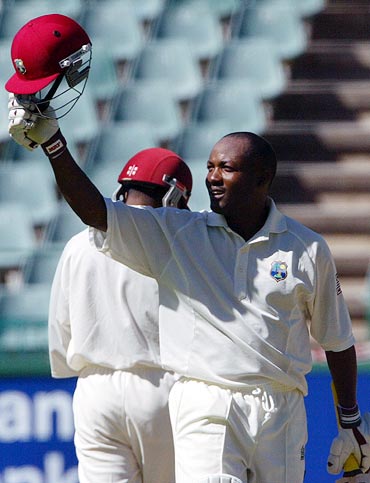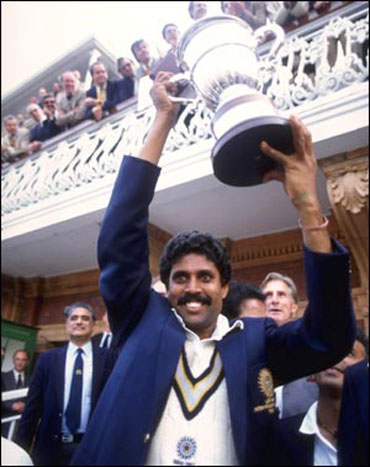
Muttiah Muralitharan became the first bowler to take 800 wickets in Test cricket when he dismissed Pragyan Ojha caught in the slip by Mahela Jayawardene. Here is a chronology of first player to reach every important milestone in Test cricket:
The first bowler to take 100 wickets in Test matches was the England left-arm slow bowler, Johnny Briggs. He reached the landmark just before tea on the first day of the Fourth Test against Australia at Sydney on 1 February 1895 in his 25th match.
The first bowler to take 200 wickets was Australia's New Zealand-born leg-break bowler, Clarrie Grimmett. He reached that total on 17 February 1936 at the Old Wanderers, Johannesburg, in the penultimate Test of his career.
Fred Trueman was the first bowler to take 300 wickets in Test cricket. He reached that total at The Oval in his 65th Test on 15 August 1964 when he had Neil Hawke of Australia caught at slip by Colin Cowdrey.
The first bowler to take 400 Test wickets was Richard Hadlee on 4 February 1990 against India on his home ground at Lancaster Park, Christchurch. He reached this landmark at the age of 38 years 216 days after 80 Tests spread over 17 years and two days.
Courtney Walsh was the first bowler to take 500 wickets in Test cricket. He reached the landmark at Port-of-Spain on 19 March 2001 in his 129th match when he had trapped Jacques Kallis in front of the wickets.
The first bowler to take 600 Test wickets was Shane Warne on 11 August 2005 at Old Trafford against England in his 126th match when he had opener Marcus Trescothick caught behind by Adam Gilchrist.
Shane Warne also became the first bowler to reach the 700-wicket mark on 26 December 2006 at Melbourne once again against England by clean bowling Andrew Strauss.
Statistics: Rajneesh Gupta
Photographs: Reuters

The first batsman to score a hundred in Test cricket was Australia's Charles Bannerman who on 15 and 16 March 1877 in the very first innings in Test cricket, scored 165 not out (retired hurt) out of Australia's total of 245.
The first batsman to score a hundred in each innings of a Test match was Warren Bardsley when he scored 136 and 130 for Australia at The Oval in August 1909.
The first batsman to score a double hundred in Test cricket was Australia's Billy Murdoch who scored 211 for Australia against England at The Oval in August 1884.
The first batsman to score a triple hundred in Test cricket was England's Andy Sandham when he scored 325 against West Indies at Kingston in April 1930. Sandham's record score was surpassed by Don Bradman (334 in 1930), Wally Hammond (336 not out in 1932-33), Len Hutton (364 in 1938). West Indian Gary Sobers then scored 365 not out against Pakistan at Kingston in 1957-58) and it remained a record until another West Indian Brian Lara made 375 against England at St. John's in 1993-94.
Australia's Matthew Hayden broke Lara's record with 380 against Zimbabwe at Perth in 2003-04, but Lara got the record back on his name against England once again against England at St. John's in the same season. Lara also became the first batsman to score a quadruple century (400 not out) in Test history.
The first batsman to score 1000 runs in Test cricket was England's Aurthur Shrewsbury. He reached that landmark during the last of his three centuries for England, against Australia at Lord's on 17 July 1893.
Clem Hill, the Australian left-hander, was the first to score both 2,000 and 3000 runs in Tests. He reached the 2000-mark against England on his home ground, the Adelaide Oval, on 15 January 1904. He completed the 3000 runs on the same ground almost exactly seven years later against South Africa.
Having exceeded Hill's final and record aggregate of 3412, Jack Hobbs went on to become the first batsman to reach both 4000 (at Lord's against Australia on 28 June 1926) and 5000 runs (on 14 March 1929 at Melbourne).
Wally Hammond continued this sequence by taking the record beyond 6000 (against South Africa at Johannesburg on 24 December 1938) and, past the 7000-mark (on 19 August 1946 at The Oval against India).
Hammond's record of 7249 survived until 29 November 1970 when Colin Cowdrey overtook it at Brisbane. Then, against England at Kingston, Jamaica, on 20 February 1974, Gary Sobers became the first to score 8000 runs in Test cricket.

India's diminutive opening batsman Sunil Gavaskar was the first to score both 9000 and 10000 runs in Tests. He reached the 9000-mark during his undefeated 166 against Australia at Adelaide on 17 December 1985. He became the first to notch five figures shortly after tea on 7 March 1987, against Pakistan at Ahmedabad's Gujarat Stadium and playing his penultimate Test. A jubilant crowd invasion halted play for more than 20 minutes.
Australia's Allan Border became the first batsman to score 11000 runs in Test cricket. He achieved this feat during his innings of 84 against South Africa at Adelaide on 29 January 1994 in his 150th consecutive Test, his 90th in succession as captain and his final international match on home soil.
West Indies' Brian Lara surpassed Border's tally but he ended his Test career 47 short of 12000-mark. India's Sachin Tendulkar became the first batsman to reach both 12000 (against Australia at Mohali on 17 October 2008) and 13000 runs (against Bangladesh at Chittagong on 17 January 2010).

The first bowler to take a hat-trick was 'The Demon' Spofforth for Australia against England at Melbourne on January 2, 1879 in only the third Test match played.
Spofforth was also the first bowler to take 10 wickets in a match when he returned the figures of 13 for 110 in the same Test.
The first bowler to take all ten wickets in a Test innings was England's Jim Laker, who took 10 for 53 in Australia's second innings after taking 9 for 37 in the first innings in July 1956. Laker also achieved the distinction of becoming the first bowler to dismiss all 11 batsmen in the match.
The first batsman to aggregate 1,000 runs in a calendar year was Australia's Clem Hill in 1902.
The first player to make 100 wicketkeeping dismissals was Australia's Bert Oldfield when he stumped England's Hedley Verity off Clarrie Grimmett at Lord's on June 23, 1934.
The first keeper to make 200 dismissals was Godfrey Evans when he caught 'Collie' Smith in West Indies' second innings at Headingley, Leeds on July 27, 1957 in his 80th Test.
The first fielder to hold 100 catches was Wally Hammond of England. He reached that landmark on July 25, 1939 against West Indies at Old Trafford, Manchester in his 76th Test.
The first instance of allround double (1000 runs & 100 wickets) was recorded in 1896. Not until 1963 did the first player (Richie Benaud) achieve the 'Double Double' of 2000 runs and 200 wickets. Twenty-one years later the first instance of the 'Treble Double' (3000 runs and 300 wickets) was completed by Ian Botham.
India's Kapil Dev became the first player to complete the 'Quadruple Double' (4000 runs and 400 wickets).
The first player to score a hundred and take 10 wickets in a match was England's Ian Botham against India in the Golden Jubilee Test at the Wankhede stadium in Mumbai, in February 1980.
The first player to play in 100 Tests was England's Colin Cowdrey, while the first to appear in 100 consecutive Tests was India's Sunil Gavaskar.